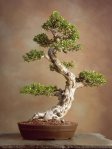If you’re a longtime fan of Morikami’s Bon Festival, you may have noticed it absent from our summer calendar. You may have also noticed the introduction of Lantern Festival in October. We wanted to explain how Morikami’s much-loved summer event evolved into Lantern Festival: In the Spirit of Obon, and why you should be just as excited for this first ever fall celebration.
In an effort to protect the safety of Morikami visitors and staff, we felt compelled to move Bon Festival out of the often inclement and even dangerous Florida summer months. Obon, however, is a traditional and religious Japanese holiday celebrated exclusively during the months of July and August in Japan. Morikami’s annual Bon Festival – in its 35th year in 2012 – has always been a family-centered celebration dedicated to honoring and remembering one’s ancestors.
In order to preserve the essence of Morikami’s much-loved event and the sanctity of Obon as it is celebrated in Japan, in October we will celebrate The Lantern Festival: In the Spirit of Obon. Visitors to this event will observe the iconic floating lanterns that have come to define Bon Festival at Morikami. And while we will we continue to feature taiko drumming, Japanese folk-dancing and even our interpretation of an ennichi street fair, these offerings will reflect a fall festival in Japan, instead of Obon-specific traditions one would only witness in Japan during summer months.
We hope you will see these changes, as we do, in keeping with our mission to educate, entertain and inspire our visitors by providing authentic Japanese cultural experiences. As a bonus, this year, we’ll be offering discounted rates on admission for those who buy early! Below is the pricing schedule:
Please note that there will be NO tickets sold at the gate and that we are limiting admission to Lantern Festival. Tickets will only be available online through our Lantern Festival event page. This way, we can ensure a breezy festival-entry for all our ticketed guests, and everyone gets to skip the line!
Morikami members still get in free and do not need to reserve their tickets in advance. If you’re a member but unsure if your membership level covers your Lantern Festival guests, feel free to email morikamimembers@pbcgov.org – we’re here to help!
Be sure to stay in touch with us here, and on Facebook, Twitter, Pinterest and Instagram where you’ll be able to enter for a chance to win tickets to Lantern Festival, and get the inside scoop on this one-of-a-kind autumn celebration. See you this fall!
UPDATE: 6/28/13
We hope you all are as excited as we are for Lantern Festival in October! Don’t forget that tickets go on sale THIS MONDAY 7/1/13 and will be at the lowest price available! If you haven’t had a chance to check out the event website yet you might have missed all that we’ll be offering at our Ennichi Street Fair and on our main entertainment stage – here’s what you can expect:
Morikami’s ennichi street fair features kids’ games, food and shopping, and will be bigger and better than ever before!
SHOP
Browse an array of Japanese items from some of the best vendors Morikami has to offer. From bonsai and tea to spices and Japanese snacks, there’s something for everyone!
EAT
As the Japanese saying goes “shokuyoku no aki” – Fall is the season for eating, and we are proud to bring you a variety of traditional Japanese fall flavors including sweet potatoes, roasted nuts and fried tofu.
PLAY
Try your hand at one of our traditional Japanese festival games, or participate in some our uniquely-fall activities like the DIY Red Maple Forest, Moon Viewing, and Lunar Poetry Wall. We’ll also offer great kids’ activities and entertainment for all ages throughout the evening.
Kid’s activities and games will include:
- Mask Making
- Kokeshi Ring Toss
- Yoyo Balloons
- Badminton
- Bucket Toss
- Scarecrow Throw
- Maneki Neko Toss
- Giant Tic-Tac-Toe
Lantern Festival features rousing taiko drum performances by Fushu Daiko, kids’ activities and traditional Japanese folk dancing . At the end of the evening, visitors watch hundreds of paper lanterns – each lit by a single candle – dot Morikami Lake, against a sky of fireworks.
Our Tentative Lantern Fest Entertainment Schedule Includes:
Taiko Drumming By Fushu Daiko
3:30pm, 5:00pm, 6:15pm
Japanese Folk Dancing
4:15pm, 5:45pm
Lantern Floating Ceremony
7:00pm
Fireworks
7:45pm
Be sure to check the entertainment page of the website for the most up to date schedule!
UPDATE: 7/24/13
Delray Subaru is the official Presenting Sponsor of Lantern Festival! For the second year in a row, we’re thrilled to call this fantastic philanthropic organization our partner, and we’re more grateful than ever for their support!

















